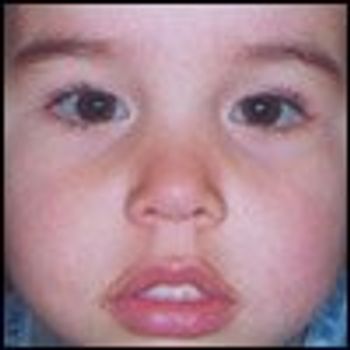
Free software for an electronic medical record, CME on CAM, West Nile virus returns



It's difficult to imagine pediatrics today without PNPs.

For several days, a 9-year-boy has had painful swelling on the top and left side of his forehead, bilateral eye swelling, intermittent fever, and nasal congestion. He was seen in the office 4 weeks earlier, after he had hit his left eye on a school desk. At that time, he presented with a left retro-orbital headache, nasal congestion and discharge, and intermittent fever.

"Jennifer is bleeding," confides Mrs Smith outside the door to her daughter's clinic room. "She's really embarrassed to discuss it with anyone but I'm really worried. Do you think that she is having sex?" You listen to her concerns and learn that Jennifer's last menstrual period has lasted approximately 3 to 4 weeks. Jennifer and her mother came to the pediatric clinic today after Mrs Smith found multiple menstrual pads in the bathroom wastebasket every day for several days.

A 3-year-old boy who presents with blue sclerae and a history of tibial fracture following a minor trau- ma (jump from a height of less than 18 inches). Has a long-standing complaint of back pain. Mother remarks that the boy bruises easily. Medical history otherwise unremarkable.

There's but limited advice you can dispense to parents of your patients who have a potentially life-threatening food allergy: Avoid, avoid, avoid! Yet there's cause for optimism today among stymied clinicians and the four percent of Americans who have a food allergy—often to nuts or shellfish: a new Food Allergy Research Consortium convened at the end of June by the federal government, and led by a prominent pediatrician and food allergy expert, has been charged with, first, conducting basic, clinical, and epidemiologic studies aimed at developing therapies to treat and prevent food allergy and, second, developing educational programs aimed at parents, children, and healthcare providers.

These continue to be less-than-happy times in certain corners of the pharmaceutical industry. Day by day, bad news accumulates. Even the industry's trade organization, the Pharmaceutical Research and Manufacturers Association (PhRMA), acknowledges that something has to give. Where are the unpleasantness and pressure coming from?

The American Medical Association (AMA) has released new directives to help fight childhood obesity and promote healthier lifestyles in schools across the country. In one of the planned efforts, AMA will develop a school health advocacy agenda that includes funding for school-based health programs, physical education and exercise (with stricter limits on declining participation), alternative polices for vending machines to promote healthy diets, and standards for healthier school lunches. The directives also encourage physicians to collaborate with communities to help develop health programs in schools."Children spend the majority of their productive time in the classroom, so we must improve access to healthy food and encourage more physical activity in school," said AMA Trustee Ronald M. Davis, MD. "Focusing our efforts on nutrition and exercise in schools can help prevent obesity and overweight in many children who may be at risk."



Your latest case: A 3-month-old girl with a pink, macular, anterior inguinal rash with satellite lesions that suggests diaper candidiasis, and a firm, nontender, 1 x 1-cm mass in the right inguinal area that is freely mobile.



Picky eating and the power of persuasion. Tongue-tie is an obstacle to breastfeeding.



What right does a teenager have to confidential health care? What influence does HIPAA exert on that right? How you apply the answers in your practice could determine whether an adolescent seeks health services-or forgoes necessary care.

The incidence of community-based methicillin-resistant Staphylococcus aureus (MRSA) infection in healthy children is increasing. This review discusses possible reasons for that rise, reviews antibiotic susceptibility patterns, and presents management guidelines.

Recognize this social anxiety disorder and treat it early to help prevent long-term dysfunction.



Fireworks light up the night sky, justice softens in a tobacco suit, high court nixes medical marijuana



Anyone who is instrumental in helping a resident achieve the goals of learning enough to be an excellent pediatrician while doing everything possible to provide knowledgeable care for sometimes extremely ill patients, is an important link in the chain from one class of new pediatricians to the next.

Mental illness is—or should be—a pediatric concern. According to a new survey supported by the National Institute of Mental Health, one half the cases of mental illness in the United States developed by the time the patient was 14 years old. The really bad news? Treatment for most of these children didn't start until years—even decades—after symptoms first appeared, rendering their illness more severe and more difficult to treat.

Arizona researchers who studied infant death records in that state have concluded that sleep-associated events—not sudden infant death syndrome (SIDS) alone, but suffocation and asphyxiation during sleep as well—are the number-one cause of death in infancy. What's more, those researchers say, three quarters of such deaths are preventable.